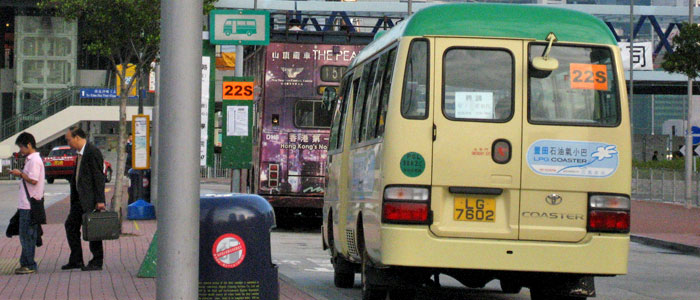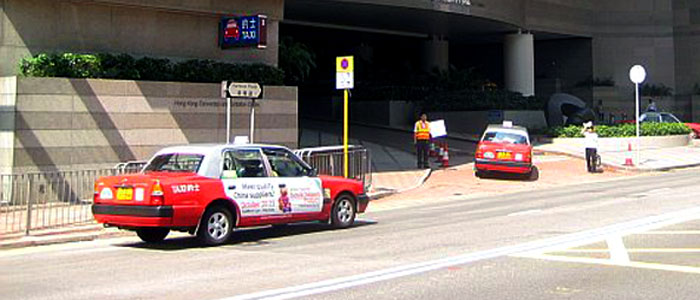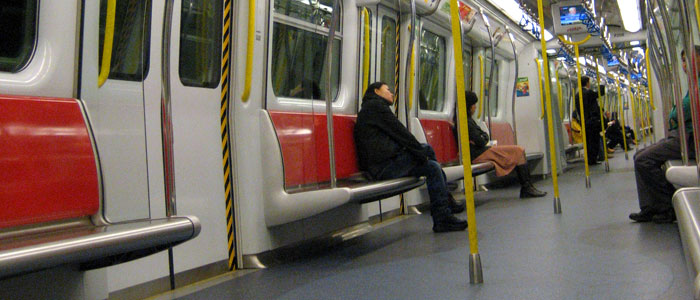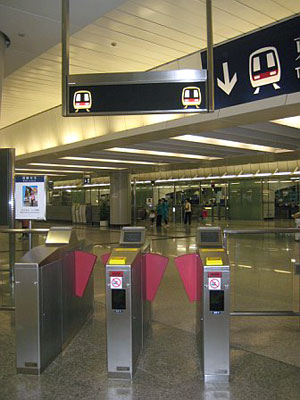Hong Kong, China Travel Guide
About Getting Around Attractions Hotels Eats & Nightlife Essentials & Practicals
Transportation in Hong Kong

Buses in Hong Kong. The city buses in Kowloon are wheelchair accessible.
BUSES
Overview: Buses in Hong Kong are so wheelchair accessible and affordable that they are a dream. They make Hong Kong an extremely wheelchair accessible tourist destination. Hong Kong Buses are the de facto mode of transportation. The Hong Kong Citybus provide an excellent, easy and affordable way to get around Hong Kong. There are air-conditioned buses and non air-conditioned buses, which are only slightly less expensive. The buses are equipped with wheelchair fold up wheelchair ramps as well as hydraulic shocks that allow the bus to lower itself to the sidewalk. Inside, there are designated handicap spaces with rails. The designated spots in the buses are usually astride or directly across of the luggage compartments on the buses.
From Mongkok, take the A21 bus down to Kowloon/Tsim Sha Tsui. Always look at the various bus stop signs and check out their stops. Take a map with you do you know where approximately you need to be dropped off.
Cost: The prices vary but not by much depending on the time of night or day and if the bus has air conditioning.
Airport to Hotel: A roundtrip ticket from the airport to Kowloon (Mongkok, Tsim Sha Tsui) and back costs $33.

Cabs in Hong Kong
CABS, TAXIS
Overview: Hong Kong taxis around Kowloon and Hong Kong Island start out inexpensive but the meters run both on distance and time. So, during traffic hours, it can get up there. In order to the Wan Chai area easily, I would suggest taking a cab, as it can be difficult to navigate the street system on the Hong Kong Island side.
Cost:The meter starts at $15 HKD for the first 2 km and $1.40 HKD/additional 0.2 km after the first 2 km. There’s a toll fee under the Hong Kong Island and Kowloon underpass. You really only need to take cab if you are going to Hong Kong Island from the Kowloon Peninsula or vice-versa and you can’t make it on the ferry. Or, if it’s late at night.

Inside Hong Kong subway
METRO
Overview: The MTR (Mass Transit Railway) in Hong Kong is accessible. The MTR runs 11 lines, including the Disneyland Line and Airport Express which takes you to the Hong Kong International Airport. My experience with the MTR is limited to riding to Shenzhen on the East Rail Line.

Metro station in Hong Kong
Accessibility: Hong Kong’s MTR does provide services for disabled travelers who physically, visually and hearing impaired. You can check out the services on the MTR site below.
Gates were wide, customs and immigration lines allow disabled travelers to scoot to the front of the line at Shenzhen, hallways are easy to navigate except for the sheer volume of people you have to contend with and navigate through and the hallways flat and easy. There are also lifts. There is a three inch gap between the platform and metro. The metro is spacious inside and there are designated spots for wheelchairs.
Site: www.mtr.com.hk